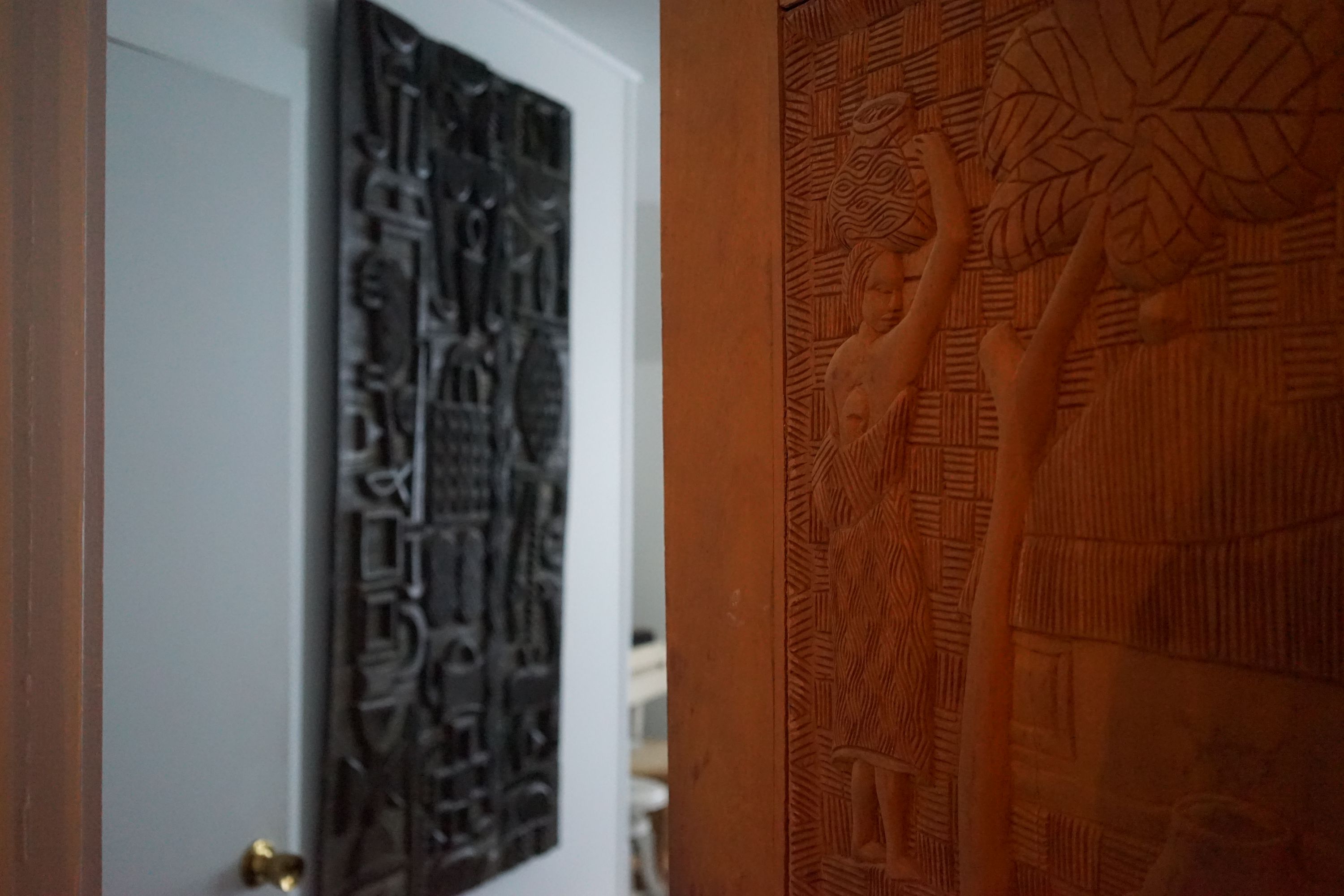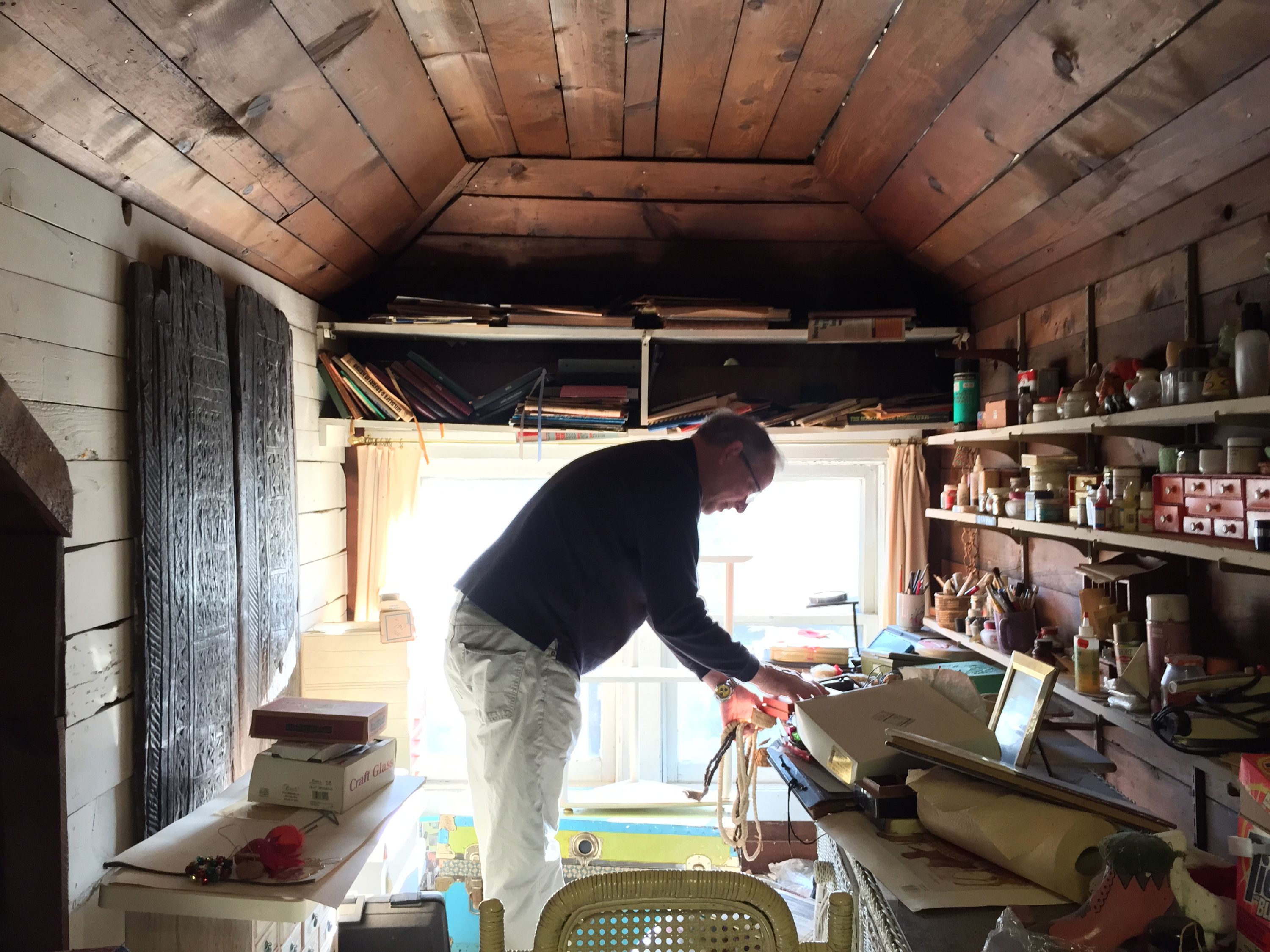object — Carved Nupe Door
This door was made as a gift for my grandparents, who worked with a variety African artisans during the mid-twentieth century to preserve indigenous art forms and support modern artisan businesses.

Some days, if the temperature and humidity are just right, this door opens once again into the home my grandparents kept in Nyack, New York. My living room, where it hangs today, will fill with the aroma of theirs: a lit fireplace, the must of old books, cigarette smoke wafting in from their from porch where my Grandfather would sit, wool, bacon. All of that remains within the fibers of this wooden door. It emerges every now and again and takes me back. How fitting that it is a door.
Made in Nigeria in 1962, this door is a good example of the art of the Nupe culture. My grandparents were given several artifacts like it during their time in Nigeria by artisan friends. They had several wooden stools just like this one, though some had fewer legs and others had trap doors built into the center of their seats, and many other fascinating things like these:

The first of the three photos below was taken in 2015 after my Grandmother’s death at 100 years old. The Nupe door hangs in the background; a Haitian door in the foreground. Below that is a view into her kitchen. The third photograph is of my Father starting the long process of sorting out their attic. The door hanging behind him is a 19th-century Nupe piece that now hangs at his house in Michigan.



My grandparents spent decades living overseas working with organizations like USAID, the Ford Foundation, and Partnership for Productivity to train indigenous groups in systems, production, and economy. Their focus was on diversifying local economies, which were at that time largely dependent upon mining, which left villages literally gutted when the extraction was over. If artisans could create lasting economic activity, they could end the boom and bust cycle they had been subjected to by outside corporations for years. My grandparents did this in Nigeria, Kenya, Liberia, and Haiti. They raised their children there.
They always kept a home in New York, and eventually retired there in the late 90s. As a child, it seemed like every corner revealed some exotic artifact — something that looked, felt, and smelled foreign to me. They portrayed the size and diversity of the world well; I saw nothing like them anyplace else, and yet they were a part of a place I knew as home. They began to shape how I saw the world. I see the way the things I saw as a child — the kinds of lines, shapes, patterns, and colors — are elements of the visual language I use in my own drawings.

When I look at this door, I’m reminded of so many things — times, people, and places, of course — but also that keeping objects creates cycles. Looking -> feeling -> thinking -> making. There is a unique cycle that emerges out of every object. Imagining fourth-dimensional lines entering and emerging from every object in our home is a head-spinning experience, especially when I imagine them forward.
The cyclic timeline that comes from my grandparents’ door will continue as long as this door is kept. I see it already in the drawings my daughter makes. She’s looking at the things that I make, which are part of the door. And she is looking at the door. She walks past it dozens of times a day. Someday it may hang in her home, where others will see it and learn from it.
This is why we keep things.
Christopher Butler, April 23, 2023
Filed under: Log